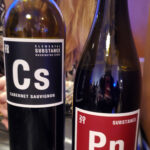2018 Wine Vintage Report
🏆 Was 2018 a Good Wine Vintage Year?
2018 was a year of abundant global harvests, with excellent quality in many regions.
In the northern hemisphere, Europe had a great rebound from a challenging previous year. France, Italy, and Spain all saw challenges again but this year overcame them much better, and produced a lot of great wine. It was a great year in Germany and Austria too. In the US, California had a standout year.
In the southern hemisphere, South America had a great year, which is a rebound for the continent as well after a couple rough years. Argentina and Chile both had exceptional vintages, while Uruguay shone. Australia was a bit more varied, and New Zealand faced some heavier challenges too. South Africa had severe drought, but still made some good wine.
The Old World had great, healthy harvests, while the New World shone through especially in South America. It was a pretty good year for all.
Let’s dig in to 2018.
📈 Global Wine Trends in 2018
🌍🍇 Global wine production in 2018 was 294 million hectoliters, up 18.1% from 2017. This is one of the largest harvest yields in multiple decades.
🌎🍷 Global wine consumption in 2018 was 239 million hectoliters, down 2.8% from 2017.
🌐 The 2018 Vintage by Country
📍 The Big Four
France, Italy, Spain, and the US consistently dominate the modern global wine scene.
 FRANCE produced 49.2 million hectoliters of wine in 2018. It was a year of extremes, with heavy spring rains, a hot and dry summer, and scattered hailstorms and outbreaks of mildew. However, most regions saw plentiful yields and high-quality wine thanks to favorable conditions during harvest.
FRANCE produced 49.2 million hectoliters of wine in 2018. It was a year of extremes, with heavy spring rains, a hot and dry summer, and scattered hailstorms and outbreaks of mildew. However, most regions saw plentiful yields and high-quality wine thanks to favorable conditions during harvest.
- BORDEAUX had an excellent year for reds, delivering wines of remarkable quality.
- BURGUNDY enjoyed a very good year, with favorable conditions supporting its high standards.
- BEAUJOLAIS had a more average year, with solid but not exceptional results.
- CHAMPAGNE experienced a very good year, producing excellent sparkling wines.
- ALSACE also had a more average year, with wines that met expectations but didn’t surpass them.
- THE LOIRE VALLEY faced some mildew challenges but still managed to produce powerful, tannin-heavy “southern” reds.
- THE RHÔNE VALLEY had a very good year, with consistent and high-quality results.
- JURA performed very well, producing wines of notable quality.
- SAVOIE also had a very good year, delivering excellent wines.
 ITALY had a good year–a return to normalcy after a standout 2015-16 and challenging 2017. While varying weather conditions led to some challenges depending on the region, Tuscany had a great year, while Sangiovese and Chianti grapes underperformed. Italy produced 54.8 million hectoliters, maintaining its #1 position in the world and making a comeback from the low harvest last year. I’m seeing a lot of varying reports of quality this year–some seem excellent, others seem more controversial.
ITALY had a good year–a return to normalcy after a standout 2015-16 and challenging 2017. While varying weather conditions led to some challenges depending on the region, Tuscany had a great year, while Sangiovese and Chianti grapes underperformed. Italy produced 54.8 million hectoliters, maintaining its #1 position in the world and making a comeback from the low harvest last year. I’m seeing a lot of varying reports of quality this year–some seem excellent, others seem more controversial.
 SPAIN produced 44.9 million hectoliters of wine in 2018. It was mostly positive, but did have some challenges. Cooler-than-average temperatures and lots of rain created conditions primed for rot and mildew, especially in regions like Rioja. However, careful vineyard management led to large yields anyway, with fresh, vibrant, and balanced wines, often with slightly lower alcohol levels. Highlights included vibrant Albariños and zesty rosés.
SPAIN produced 44.9 million hectoliters of wine in 2018. It was mostly positive, but did have some challenges. Cooler-than-average temperatures and lots of rain created conditions primed for rot and mildew, especially in regions like Rioja. However, careful vineyard management led to large yields anyway, with fresh, vibrant, and balanced wines, often with slightly lower alcohol levels. Highlights included vibrant Albariños and zesty rosés.
 THE UNITED STATES produced 26.1 million hectoliters of wine in 2018.
THE UNITED STATES produced 26.1 million hectoliters of wine in 2018.
 CALIFORNIA had a standout year, with a calm and consistent growing season that was a huge relief after the wildfires of 2017. Cool spring weather led to delayed flowering, but the ideal conditions produced excellent fruit. The summer was warm but without excessive heat spikes, so grapes ripened gradually and retained their freshness. Early October rains caused some interruptions but no major challenges, so producers could be flexible with their harvests. Napa’s yields were generous, and the region produced elegant, terroir-focused wines–perhaps not as intense and bold as California may be known for, but excellent nonetheless.
CALIFORNIA had a standout year, with a calm and consistent growing season that was a huge relief after the wildfires of 2017. Cool spring weather led to delayed flowering, but the ideal conditions produced excellent fruit. The summer was warm but without excessive heat spikes, so grapes ripened gradually and retained their freshness. Early October rains caused some interruptions but no major challenges, so producers could be flexible with their harvests. Napa’s yields were generous, and the region produced elegant, terroir-focused wines–perhaps not as intense and bold as California may be known for, but excellent nonetheless. WASHINGTON STATE had a cool April, a warm May, a cool June, a warm July & August, and finally a cool harvest season. How confusing! Still, it was a good vintage overall, with a good balance of sugar and acidity. Likely some great, classic wines out of the state this year.
WASHINGTON STATE had a cool April, a warm May, a cool June, a warm July & August, and finally a cool harvest season. How confusing! Still, it was a good vintage overall, with a good balance of sugar and acidity. Likely some great, classic wines out of the state this year. OREGON had a warm and dry year with just a few heat spikes, creating a long and balanced growing season. Cool autumn weather allowed for extended hang time. Wines showed complex flavors and solid acidity, despite wildfire smoke concerns.
OREGON had a warm and dry year with just a few heat spikes, creating a long and balanced growing season. Cool autumn weather allowed for extended hang time. Wines showed complex flavors and solid acidity, despite wildfire smoke concerns. NEW YORK STATE had a challenging year. Warm and wet conditions increased risk of disease, and yields were low. However, what was produced in the Finger Lakes region was largely elegant and restrained.
NEW YORK STATE had a challenging year. Warm and wet conditions increased risk of disease, and yields were low. However, what was produced in the Finger Lakes region was largely elegant and restrained.
📍 Europe
The heart of the wine world, Europe boasts centuries of expertise and massive variety.
 PORTUGAL produced 6.1 million hectoliters of wine in 2018. It was a challenging, yet ultimately promising year for Portuguese wines. Heavy spring rains and hailstorms caused major erosion and crop loss, especially in the Douro Valley. A hot and dry summer pushed the surviving grapes to have excellent ripeness and concentration. It was a great year for Touriga Franca, putting out wines demonstrating purity, vibrant aromas, and structured tannins. As for Port, it was an uneven year that still led to some high-quality outputs. Timely harvests helped mitigate mildew pressure. While not widely-declared, single-quinta Ports and select vintage releases are still noted for good balance, depth, and fruit expression.
PORTUGAL produced 6.1 million hectoliters of wine in 2018. It was a challenging, yet ultimately promising year for Portuguese wines. Heavy spring rains and hailstorms caused major erosion and crop loss, especially in the Douro Valley. A hot and dry summer pushed the surviving grapes to have excellent ripeness and concentration. It was a great year for Touriga Franca, putting out wines demonstrating purity, vibrant aromas, and structured tannins. As for Port, it was an uneven year that still led to some high-quality outputs. Timely harvests helped mitigate mildew pressure. While not widely-declared, single-quinta Ports and select vintage releases are still noted for good balance, depth, and fruit expression.
 GERMANY produced 10.3 million hectoliters of wine in 2018. Record-breaking heat and dry conditions produced a harvest that was abundant and healthy. Despite drought-like conditions, vines thrived, yielding fully ripened grapes with concentrated flavors and low disease pressure. As a result, the country produced rich, dry, fruit-driven wines. Many Spätlesen and Auslesen were luxuriously ripe, driven by natural sweetness rather than botrytis. The vintage also delivered excellent Eiswein thanks to a frosty January.
GERMANY produced 10.3 million hectoliters of wine in 2018. Record-breaking heat and dry conditions produced a harvest that was abundant and healthy. Despite drought-like conditions, vines thrived, yielding fully ripened grapes with concentrated flavors and low disease pressure. As a result, the country produced rich, dry, fruit-driven wines. Many Spätlesen and Auslesen were luxuriously ripe, driven by natural sweetness rather than botrytis. The vintage also delivered excellent Eiswein thanks to a frosty January.
 AUSTRIA produced 2.8 million hectoliters of wine in 2018. A delayed spring budburst helped to avoid frost damage, but flowering occurred early due to rising temperatures. The summer was hot and dry, with heavy rains in June and July that replenished water supplies but stressed some vines. It was the earliest harvest on record, with rain requiring careful timing, especially for Riesling which was affected by botrytis. It was a good year for fruity whites and concentrated, smooth-tannin reds. Sweet wines, including Beerenauslese and Eiswein, were also very successful.
AUSTRIA produced 2.8 million hectoliters of wine in 2018. A delayed spring budburst helped to avoid frost damage, but flowering occurred early due to rising temperatures. The summer was hot and dry, with heavy rains in June and July that replenished water supplies but stressed some vines. It was the earliest harvest on record, with rain requiring careful timing, especially for Riesling which was affected by botrytis. It was a good year for fruity whites and concentrated, smooth-tannin reds. Sweet wines, including Beerenauslese and Eiswein, were also very successful.
 Switzerland produced 1.1 million hectoliters of wine in 2018.
Switzerland produced 1.1 million hectoliters of wine in 2018.
 Hungary produced 3.6 million hectoliters of wine in 2018.
Hungary produced 3.6 million hectoliters of wine in 2018.
 Greece produced 2.2 million hectoliters of wine in 2018.
Greece produced 2.2 million hectoliters of wine in 2018.
 Czechia produced 0.7 million hectoliters of wine in 2018.
Czechia produced 0.7 million hectoliters of wine in 2018.
 Slovakia produced 0.4 million hectoliters of wine in 2018.
Slovakia produced 0.4 million hectoliters of wine in 2018.
 Slovenia produced 0.9 million hectoliters of wine in 2018.
Slovenia produced 0.9 million hectoliters of wine in 2018.
 Croatia produced 1.0 million hectoliter of wine in 2018.
Croatia produced 1.0 million hectoliter of wine in 2018.
 Georgia produced 1.7 million hectoliters of wine in 2018.
Georgia produced 1.7 million hectoliters of wine in 2018.
 Romania produced 5.1 million hectoliters of wine in 2018.
Romania produced 5.1 million hectoliters of wine in 2018.
 Moldova produced 1.9 million hectoliters of wine in 2018.
Moldova produced 1.9 million hectoliters of wine in 2018.
 Ukraine produced 2.0 million hectoliters of wine in 2018.
Ukraine produced 2.0 million hectoliters of wine in 2018.
 Russia produced 4.3 million hectoliters of wine in 2018.
Russia produced 4.3 million hectoliters of wine in 2018.
 Bulgaria produced 1.0 million hectoliter of wine in 2018.
Bulgaria produced 1.0 million hectoliter of wine in 2018.
 Luxembourg produced 0.1 million hectoliters of wine in 2018.
Luxembourg produced 0.1 million hectoliters of wine in 2018.
 Cyprus produced 0.1 million hectoliters of wine in 2018.
Cyprus produced 0.1 million hectoliters of wine in 2018.
 THE UNITED KINGDOM produced 98,289 hectoliters of wine in 2018–an absolutely huge, record-breaking yield, nearly triple the amount of last year. And 2018 was certainly a miraculous year, delivering exceptional ripeness. A warm, dry summer with perfect flowering conditions resulted in bunch weights and sugar levels far beyond any historical average. Despite a slow start to the year (and fears of another challenging vintage), the weather turned dramatically in favor of the growers, allowing for a leisurely harvest from late August to October. Sparkling wines flourished, and the year also saw significant improvements in still/non-sparkling wines. Bacchus, Chardonnay, and Pinot Noir stood out especially. While this extraordinary vintage may be viewed as either a sign of things to come for the UK, or just a lucky climactic anomaly, it was definitely a remarkable year.
THE UNITED KINGDOM produced 98,289 hectoliters of wine in 2018–an absolutely huge, record-breaking yield, nearly triple the amount of last year. And 2018 was certainly a miraculous year, delivering exceptional ripeness. A warm, dry summer with perfect flowering conditions resulted in bunch weights and sugar levels far beyond any historical average. Despite a slow start to the year (and fears of another challenging vintage), the weather turned dramatically in favor of the growers, allowing for a leisurely harvest from late August to October. Sparkling wines flourished, and the year also saw significant improvements in still/non-sparkling wines. Bacchus, Chardonnay, and Pinot Noir stood out especially. While this extraordinary vintage may be viewed as either a sign of things to come for the UK, or just a lucky climactic anomaly, it was definitely a remarkable year.
📍 North & South America
The Americas continue to expand their influence, from the rugged Andes to Canada’s icy valleys.
 ARGENTINA produced 14.5 million hectoliters of wine in 2018. Conditions were nearly ideal this year, a needed relief after the last few years of struggles. A little localized frost damage here and there wasn’t enough to keep the country down. Warm days and cool nights through the growing season allowed for optimal ripening, and light rainfall helped keep the harvest free of disease. Mendoza had a standout year for smooth and vibrant Malbec, and both reds and whites across other regions like Patagonia and the Uco Valley (and beyond) should be great this year.
ARGENTINA produced 14.5 million hectoliters of wine in 2018. Conditions were nearly ideal this year, a needed relief after the last few years of struggles. A little localized frost damage here and there wasn’t enough to keep the country down. Warm days and cool nights through the growing season allowed for optimal ripening, and light rainfall helped keep the harvest free of disease. Mendoza had a standout year for smooth and vibrant Malbec, and both reds and whites across other regions like Patagonia and the Uco Valley (and beyond) should be great this year.
 CHILE produced 12.9 million hectoliters of wine in 2018. It was widely celebrated as one of the best in recent memory, marked by ideal growing conditions that delivered exceptional quality and quantity. A cool, wet winter replenished water reserves after previous drought conditions, and gave way to a warm spring. A moderate summer let grapes ripen evenly, preserving acidity and flavor. It was a good year for reds, like Carmenère, Cabernet Sauvignon, and Syrah. Whites from coastal regions like Casablanca are favored this year too. It was an excellent year cross the country.
CHILE produced 12.9 million hectoliters of wine in 2018. It was widely celebrated as one of the best in recent memory, marked by ideal growing conditions that delivered exceptional quality and quantity. A cool, wet winter replenished water reserves after previous drought conditions, and gave way to a warm spring. A moderate summer let grapes ripen evenly, preserving acidity and flavor. It was a good year for reds, like Carmenère, Cabernet Sauvignon, and Syrah. Whites from coastal regions like Casablanca are favored this year too. It was an excellent year cross the country.
 Brazil produced 3.1 million hectoliters of wine in 2018.
Brazil produced 3.1 million hectoliters of wine in 2018.
 URUGUAY produced 0.7 million hectoliters of wine in 2018. It was a standout year, hailed as one of Uruguay’s finest, with drought conditions providing ideal ripening for balanced and rich wines. Tannat (the national grape) excelled with great fruit expression and high alcohol levels. All wines across the country this year performed very well.
URUGUAY produced 0.7 million hectoliters of wine in 2018. It was a standout year, hailed as one of Uruguay’s finest, with drought conditions providing ideal ripening for balanced and rich wines. Tannat (the national grape) excelled with great fruit expression and high alcohol levels. All wines across the country this year performed very well.
📍 Oceania
Oceania’s unique climates and soils produce globally distinctive wines.
 AUSTRALIA produced 12.7 million hectoliters of wine in 2018. It was a good year overall, but outcomes heavily depended on the region. A dry spring and warm summer led to a very hot February, which caused heat stress in areas like Barossa Valley. But a cooler March & April harvest period helped balance things out. Look for good reds from Barossa, and good whites from the Eden & Clare Valleys. A dry season led to a tougher year in McLaren Vale. 2018 isn’t Australia’s most standout vintage, but still has plenty of quality.
AUSTRALIA produced 12.7 million hectoliters of wine in 2018. It was a good year overall, but outcomes heavily depended on the region. A dry spring and warm summer led to a very hot February, which caused heat stress in areas like Barossa Valley. But a cooler March & April harvest period helped balance things out. Look for good reds from Barossa, and good whites from the Eden & Clare Valleys. A dry season led to a tougher year in McLaren Vale. 2018 isn’t Australia’s most standout vintage, but still has plenty of quality.
 NEW ZEALAND produced 3.0 million hectoliters of wine in 2018. This year featured a variety of weather challenges–a record-hot summer, tropical cyclones in February, heavy rains and humidity, and botrytis. Harvests were delayed, especially in Marlborough. Despite these difficulties, the warm early season led to generous yields and rich, ripe wines. Central Otago produced high-concentration Pinot Noir, and Hawke’s Bay came out with excellent Chardonnay and Syrah.
NEW ZEALAND produced 3.0 million hectoliters of wine in 2018. This year featured a variety of weather challenges–a record-hot summer, tropical cyclones in February, heavy rains and humidity, and botrytis. Harvests were delayed, especially in Marlborough. Despite these difficulties, the warm early season led to generous yields and rich, ripe wines. Central Otago produced high-concentration Pinot Noir, and Hawke’s Bay came out with excellent Chardonnay and Syrah.
📍 Africa & Asia
Emerging markets in Africa and Asia bring fresh perspectives to the industry.
 SOUTH AFRICA produced 9.5 million hectoliters of wine in 2018. There was a severe drought–one of the worst in a century. Yields were lower as a result. A cold winter brought frost damage early in the season, and then a hot, dry summer stressed the vines more. But disease pressure was low, and the grapes were highly concentrated, especially those on older vines. Despite the tough conditions, many vintners crafted ripe and flavorful wines.
SOUTH AFRICA produced 9.5 million hectoliters of wine in 2018. There was a severe drought–one of the worst in a century. Yields were lower as a result. A cold winter brought frost damage early in the season, and then a hot, dry summer stressed the vines more. But disease pressure was low, and the grapes were highly concentrated, especially those on older vines. Despite the tough conditions, many vintners crafted ripe and flavorful wines.
 China produced 9.3 million hectoliters of wine in 2018.
China produced 9.3 million hectoliters of wine in 2018.
Sources: Bibendum, Wine-Searcher, OIV, UC Davis, iDealWine, Gavin Quinney, Goedhuis Waddesdon, Washington Wine, Finger Lakes Wine Alliance, Jancis Robinson (2), K&L Wines, Oregon Wine, Napa Vintners, South America Wine Guide, Austrian Wine, English Wine.
🍷 Wines from 2018 I’ve Tried
See all Vintages (Years) of Wine, or jump straight to: 2012, 2013, 2014, 2015, 2016, 2017, 2018, 2019, 2020, 2021, 2022, 2023, or 2024. See also: No Vintage.






